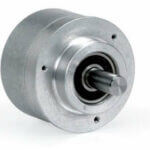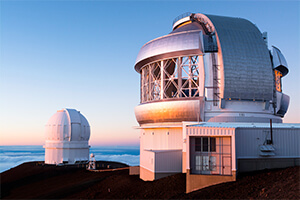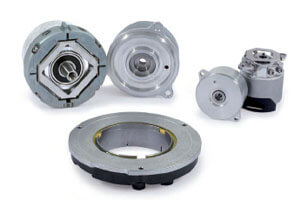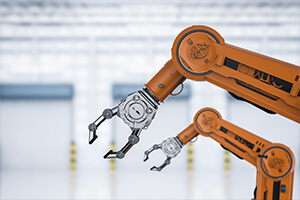April 27, 2020
The difference between single-turn and multi-turn encoders
Of the many types of encoders , rotary encoders provide rotary positioning feedback. One of the distinctions between this type of encoder is single-turn and multi-turn. The functional difference is if you need to keep track of total revolutions or the distance traveled beyond 360 degrees. They both have an important place in machine and system design, allowing for the control of critical load and shaft movement.
What is a single-turn encoder? 
A single-turn encoders provides 360 degrees of feedback. It does not continually record position after one full turn. This does not mean they are imprecise. Their accuracy and resolution can be just as impressive or as simple as necessary, depending on the application.
Advantages of single-turn encoders
Single-turn encoders are best for measuring the position within a single rotation, e.g. angles, pivot points or shorter linear motion or for simply tracking the speed of a system. They are not meant for applications where the number of revolutions is important to know.
 Single-turn encoder applications
Single-turn encoder applications
• Telescopes
• Antennas
• Entry level motors
• Blood pumps
• AGV drive wheels
• Wind turbine generators
What is a multi-turn encoder?
A multi-turn encoder is essentially a single-turn encoder that keeps track of revolutions and position change beyond 360 degrees and longer linear movements. This additional capability is achieved by a few different approaches.
The three types of multi-turn encoders
There are different approaches to multi-turn encoders. The main differences center on the volume of equipment necessary, whether its gears or battery backup for saving data.
- Battery Back up
Encoders use a unique marking on the readable disc that sends a pulse each time a full turn is completed. This requires some processing and storage, but battery backups can be used to save the information and still track if motion occurs between power off and on.
- Geared
Instead of markings on a disc, geared multi-turn encoders use gears to track the number of revolutions. The rotor of the encoder is connected by to a gear system, which then rotates each revolution. However, these gears do take space in the encoder as well.
- Wiegand-sensor
An alternative to the geared approach, is the Wiegand-wire style which uses a magnetic pulse to reverse polarity and communicate each revolution.
Multi-turn encoder applications
• Robot joints
• Servo motors
• Pitch control on wind turbine blades
• Cranes
• Moving stages
As in most cases, whether you choose a single-turn or multi-turn encoder depends on the requirements of your application. Let us know if our engineers can help you make the right choice for your next project.

